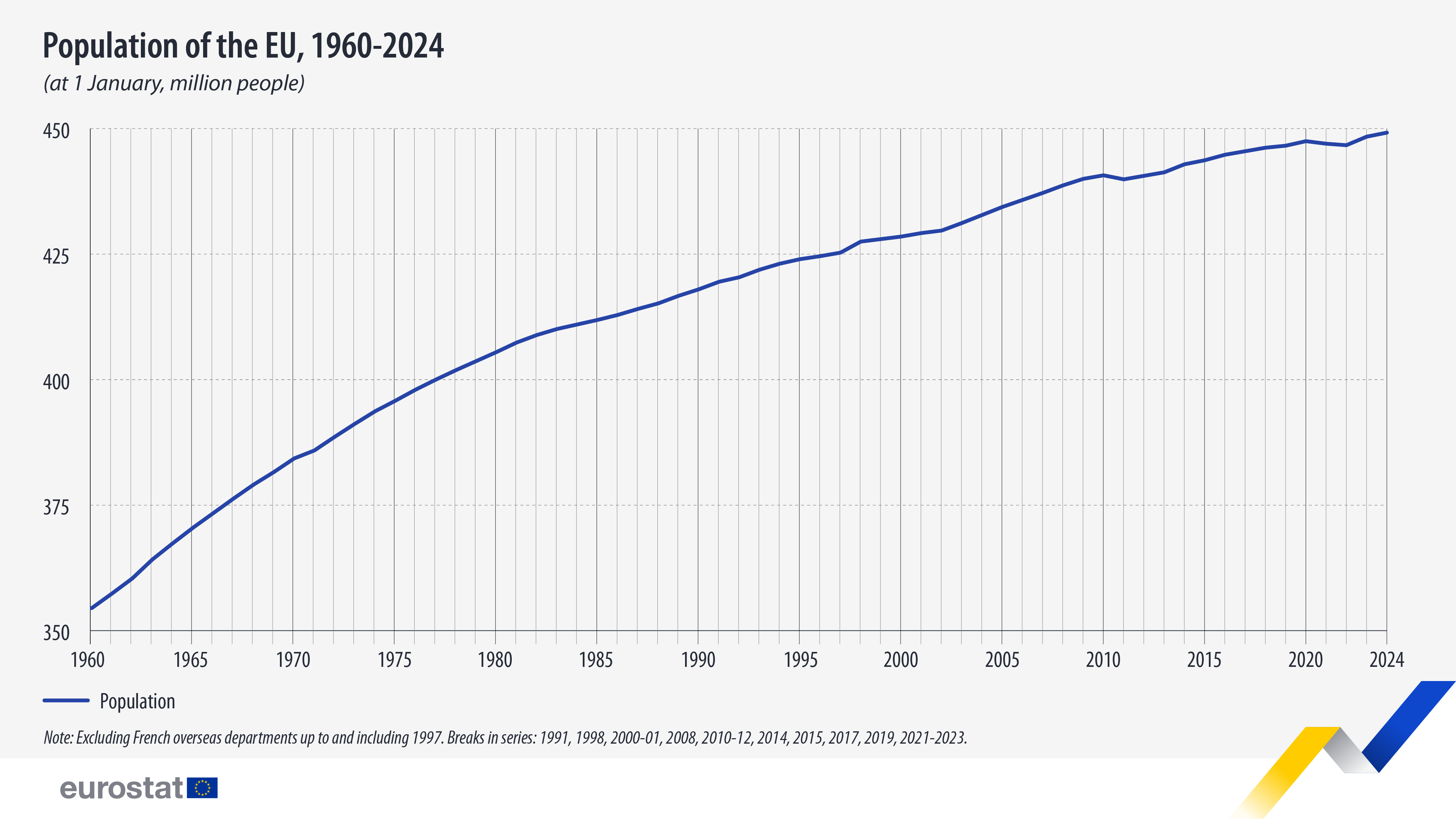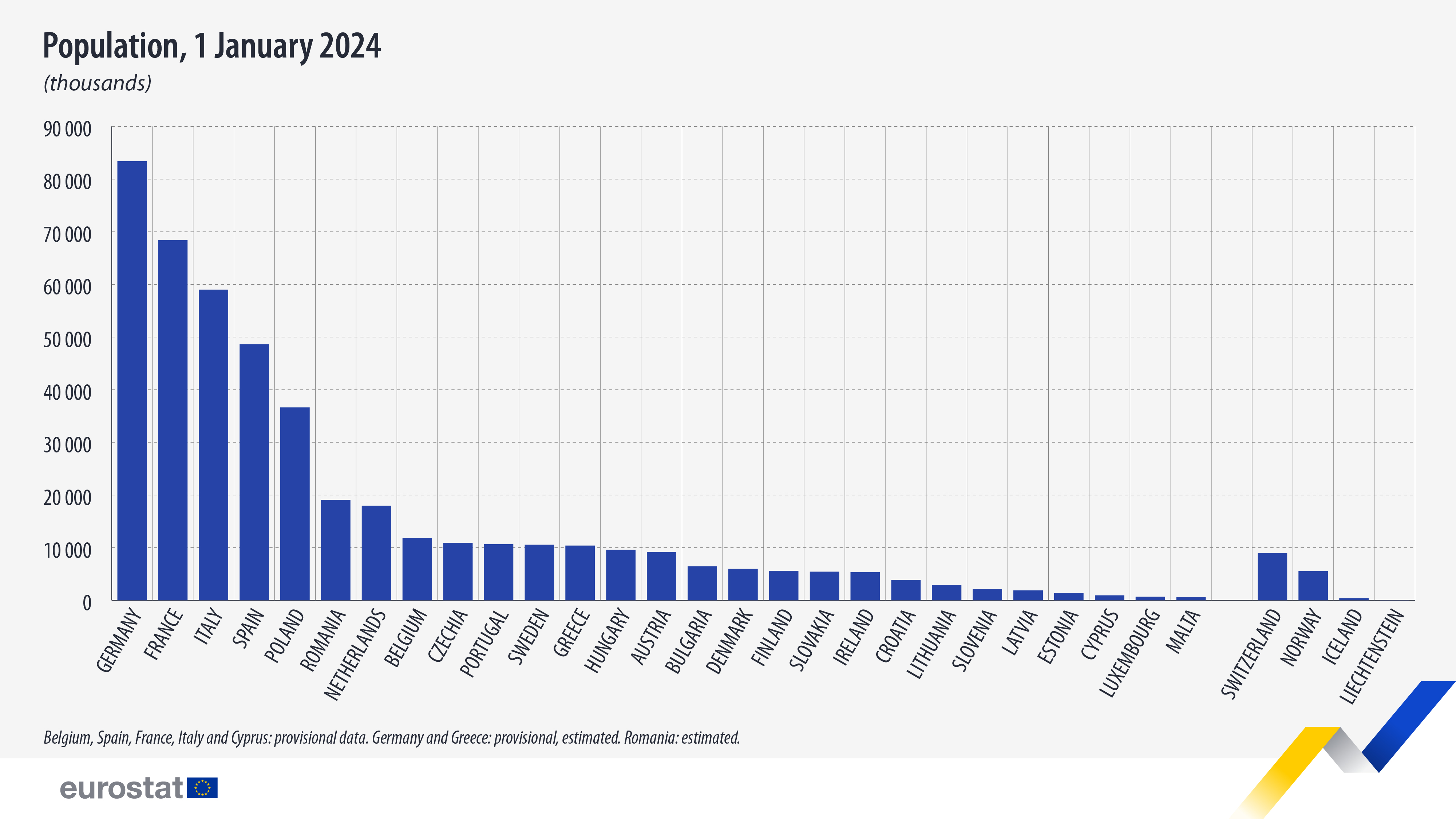EU population increases again in 2024

After a decline in 2020 and 2021 due to the impact of the COVID-19 pandemic, the EU’s population has increased for the second consecutive year, rising from 447.6 million on 1 January 2023 to 449.2 million people on 1 January 2024.
The negative natural change (more deaths than births) was outnumbered by the positive net migration. The observed population growth can be largely attributed to the increased migratory movements post-COVID-19 and to the influx of displaced persons from Ukraine who received temporary protection status in EU countries, as a consequence of the Russian war of aggression in February 2022.
This information comes from data on population published by Eurostat today. This article presents a selection of findings from the more detailed Statistics Explained article on population and population change statistics.

Source dataset: demo_gind
When considering a longer time frame, the population of the EU grew from 354.5 million in 1960 to 449.2 million on 1 January 2024, an increase of 94.7 million people. The rate of population growth has gradually slowed down in recent decades: the EU population increased on average by about 0.6 million persons per year during the period 2015–2024, whereas the average increase in the 1960s was 2.9 million people per year. While the EU population briefly declined in 2020 by around half a million persons and in 2021 by almost 0.3 million persons due to the COVID-19 pandemic, it has started to regain its growth as the new figures show.

Source dataset: demo_gind
The population of individual EU countries on 1 January 2024 ranged from 0.6 million in Malta to 83.4 million in Germany. Germany, France and Italy together comprised almost half (47%) of the total EU population on 1 January 2024.
While the overall EU population increased in 2024, not all EU countries registered population increases. In total, 7 countries recorded a decrease in population between 1 January 2023 and 1 January 2024, with the largest decreases reported in Poland (-132 800 people), Greece (-16 800) and Hungary (-15 100). Increases were observed in the other 20 countries, with the largest in Spain (+525 100), Germany (+330 000) and France (+229 000).
This article marks the World Population Day taking place annually on 11 July to raise awareness of the global population situation.
For more information
- Statistics Explained article on population and population change statistics
- Dedicated section on population and demography
- Database on demography, population stock and balance
- Demography in Europe – 2024 edition
Methodological notes
- The population figures for 1 January 2024 include revisions made by EU countries to take into account the results of the 2021 population census
- Guidance on the inclusion of refugees from Ukraine who benefit from temporary protection in the EU in the usually resident population
If you have any queries, please visit our contact us page.
